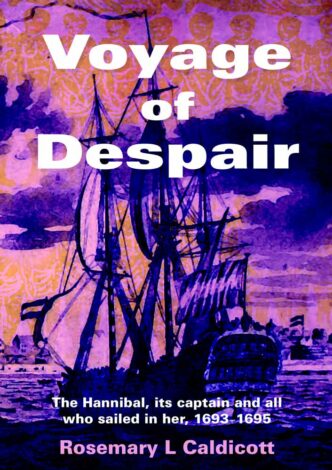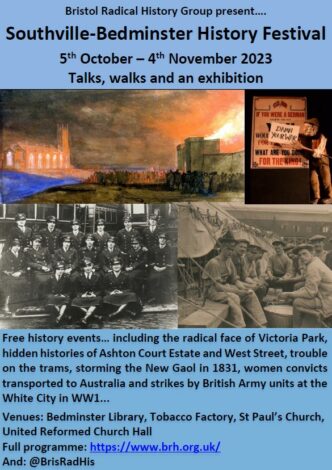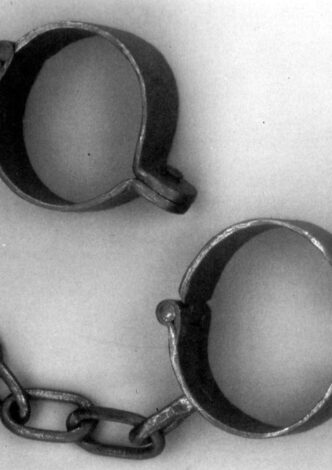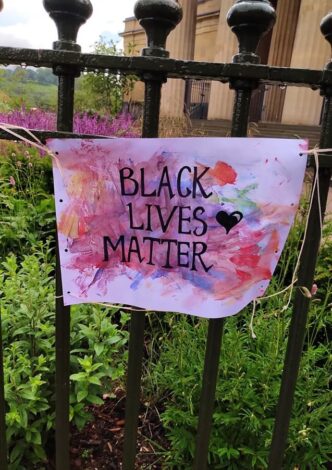 Not A BRHG Event
Not A BRHG Event
Rosemary Caldicott will be giving a short introductory talk on Zoom about her new book "Voyage of Despair" on Friday July 19th at 14:30 to Black History Conversations link here The brutality of the slave trade. In 1693, Captain Thomas Phillips embarked on a voyage from London to Guinea, where he purchased enslaved Africans on behalf of the Royal African Company. The subsequent journey across the Atlantic witnessed a tragic toll, with hundreds of the enslaved captives, and many of the crew, […]
 Not A BRHG Event
Not A BRHG Event
People’s University of Fishponds – Sunday 30 June 2024 – 7:00pm – The Nissen Hut, Eastville Park, Bristol. In 1693, Captain Thomas Phillips embarked on a voyage from London to Guinea in the Hannibal, where he purchased enslaved Africans on behalf of the Royal African Company. The subsequent journey across the Atlantic witnessed a tragic toll, with hundreds of the enslaved captives, and many of the crew, losing their lives before the ship reached the shores of Barbados.Fast forward to 2010, three […]
The brutality of the slave trade. In 1693, Captain Thomas Phillips embarked on a voyage from London to Guinea, where he purchased enslaved Africans on behalf of the Royal African Company. The subsequent journey across the Atlantic witnessed a tragic toll, with hundreds of the enslaved captives, and many of the crew, losing their lives before the ship reached the shores of Barbados. Three centuries later, in 2010, Brecon Town Council made a startling and controversial decision—to honour Captain […]
In November 2014 the Bishop of Bristol, preaching to school students, claimed that ‘speculation’ about the ‘business roots’ of the city’s philanthropic icon, Edward Colston, was merely ‘speculation’. These incendiary words inspired complaints, protests and new historical research into Colston’s slave-trading activities and his role as a ‘City Father.’ They also led to the formation of the campaign group Countering Colston which challenged both the physical commemoration and […]
As I worked on gathering pertinent words that will appear in the index of my forthcoming book: The Journal of Captain Thomas Phillips of Brecon, the Slave Ship Hannibal, and all who Sailed on Her (1693-1695) the key word ‘museum’ appears on my list. Why had a word associated with exhibition interjected itself into a narrative of events that had occurred nearly 330 years ago? To answer this question, I refer to the plaque commissioned by Brecon Town Council in 2010 to honour the life of the slave […]
As I worked on gathering pertinent words that will appear in the index of my forthcoming book: The Journal of Captain Thomas Phillips of Brecon, the Slave Ship Hannibal, and all who Sailed on Her (1693-1695) the key word ‘museum’ appears on my list. Why had a word associated with exhibition interjected itself into a narrative of events that had occurred nearly 330 years ago? To answer this question, I refer to the plaque commissioned by Brecon Town Council in 2010 to honour the life of the slave […]
Warning – Due to the nature of the topic this article is not suitable for children The stench of the hold…was so intolerably loathsome that it was dangerous to remain there for any time…but now that the whole ship’s cargo were confined together, it became absolutely pestilential.[1] Let me begin by saying that there was nothing unique about the utterly appalling conditions that existed on the Hannibal slave ship: All merchant slave ships were floating prisons of cruelty and depravity. For the […]
 Not In An Event Series
Not In An Event Series
The Red Lodge Museum, Park Row, Bristol BS1 5LJ. Booking details here. Bristol Radical History Group member Mark Steeds, author of Cry Freedom, Cry Seven Stars and co-author of From Wulfstan to Colston, is giving a talk animated by archive poetry readings to tell the international story of the movement towards abolition during the eighteenth and nineteenth centuries. The lecture will begin with some history on African agency, starting with Nanny of the Maroons and followed by the 1736 […]
Since the fall of the slave-trader Edward Colston's statue in June 2020 the government, institutions, local politicians and his defenders, the Society of Merchant Venturers, have all been forced to react in one way or another. What unites them is that they have all attempted to cover up years of active defence or inaction concerning the celebration, commemoration or memorialisation of slave-traders in the city. From the mouths of people directly involved in the campaigning and activism […]
 Not A BRHG Event
Not A BRHG Event
This event is part of Bristol Festival of Literature and you can can register for the meeting here. In this two-part event authors Roger Ball and Mark Steeds of Bristol Radical History Group and Countering Colston discuss how facts, fictions and silences about the history of Edward Colston became part of the collective memory in the Victorian period and were subsequently challenged by historians, writers and artists. Ros Martin is a literary-based artist and activist of many years standing. She […]
 Not A BRHG Event
Not A BRHG Event




